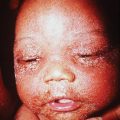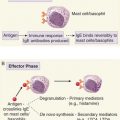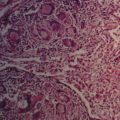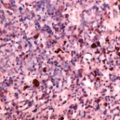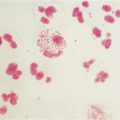CASE 38
FG is a 62-year-old man who had received a renal transplant 12 years earlier after a period of 5 years during which he had undergone both peritoneal dialysis and later hemodialysis. The underlying cause of his chronic renal failure was believed to be a combination of diabetes (he had been insulin dependent since the age of 16) and long-standing hypertension (>25 years), which had been refractory to simple therapy and required triple therapy for adequate control. He has been on maintenance therapy (rapamycin and azathioprine) for immunosuppression, having been weaned from an earlier regimen of cyclosporine and prednisone at the suggestion of his transplant team, who thought this would be a simpler regimen for him.
QUESTIONS FOR GROUP DISCUSSION
1. In the early post-engraftment phase, the most frequent early complication is acute graft rejection. Given that 10 years have passed since transplantation, the likelihood that we are dealing with a manifestation of an acute rejection response is low. Review the etiology of acute graft rejection. Explain the rationale for immunosuppressive therapy (and cell target) in this therapeutic intervention.
2. Chronic graft failure, which is more insidious than acute rejection and more difficult to treat, is not a likely possibility. How would you rule out chronic rejection in the case of kidney transplants?
3. Infection is a leading cause of death in immunosuppressed patients. Cytomegalovirus (CMV/ human herpesvirus 6) and Epstein-Barr virus (EBV/human herpesvirus 4) are common infections in post-transplant patients. These patients may present with hepatitis, elevated liver enzymes, but rarely jaundice. Yet, these may not be de novo infections. Explain.
5. CMV and EBV have evolved immunoevasive strategies that allow them to remain in a latent phase even in the presence of a healthy immune system. Describe these immunoevasive strategies.
6. Virally infected cells are destroyed by natural killer (NK) cells and cytotoxic T cells. Despite this, patients develop anti-CMV and anti-EBV antibodies when infected. Explain.
7. A number of infectious agents (e.g., hepatitis C) and some malignancies induce the production of cryoglobulins, abnormal antibodies that precipitate at temperatures below 98.6°F (37°C) and become soluble again at normal body temperatures. Discuss how the production of cryoglobulins could be the stimulus for processes that cause the rash.
8. Although there is some evidence that complement activation can lead to lysis of enveloped viruses, this is not considered one of the main effector mechanisms in host immunity to viral infections. Therefore, it is unlikely that this would lead to a low C4 level in serum as observed in this patient. Provide a rationale for the low levels of C4 (and C3) complement proteins.
9. In this patient, polymerase chain reaction (PCR) detected high levels of hepatitis C in the blood, indicative of active viral infection. Given this information, what would you expect to be the cause of the rash on this patient’s legs? Explain how this would manifest. How would you treat the hepatitis C infection?
Stay updated, free articles. Join our Telegram channel

Full access? Get Clinical Tree


